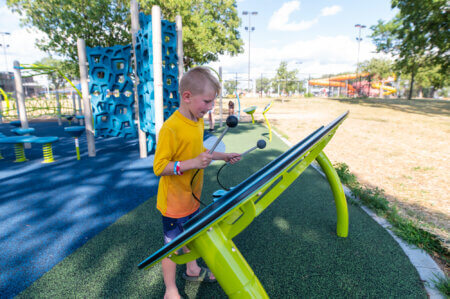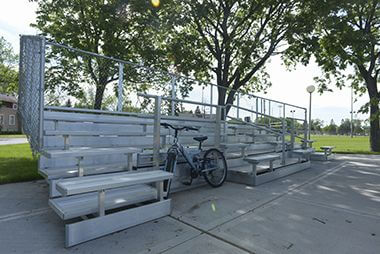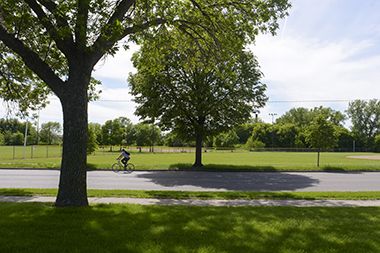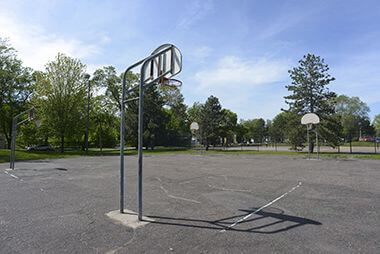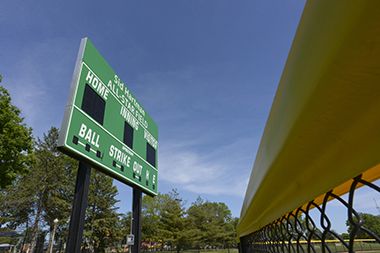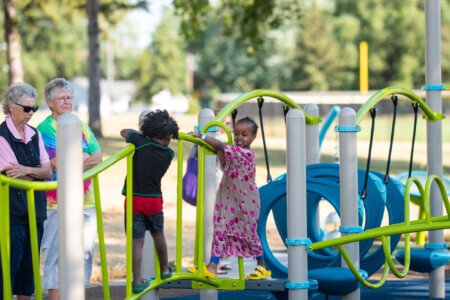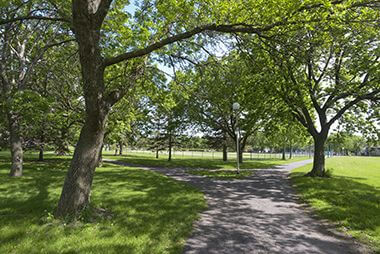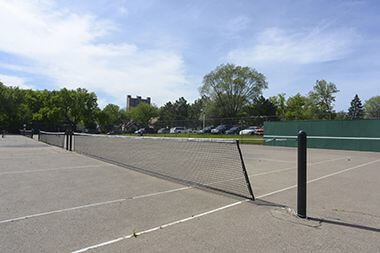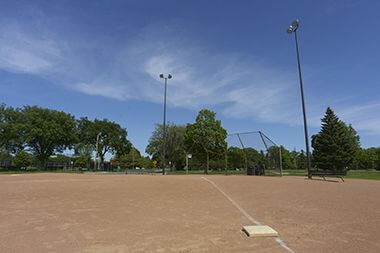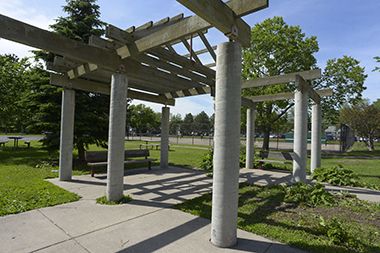Address
1530 Johnson St. NE
Minneapolis, MN 55413
Plan Your Route
Contact
Phone: 612-370-4920
Email: northeast@minneapolisparks.org
Park Hours
6 am–midnight
Ordinance PB-2-33
Features & Amenities
- Baseball Field
- Bike Skills Course
- Drinking Fountain
- Grill
- Picnic Area
- Playground/Tot Lot
- Restroom Facility
- Soccer Field
- Softball Field
- Tennis Court
- Walking Path
- Water Park
Not finding what you’re looking for?
Search Parks & Destinations
Good to Know
Jim Lupient Water Park (fee)
Northeast Recreation Center opened in 2018. It is located at 1530 Johnson St. NE.
Park Projects
See what’s currently in the works for this park. Some projects may be under the name of the regional park or service area it lives within. View Current Projects

Your NPP20 money at work:
Maintenance is increasing at all neighborhood parks, thanks to additional annual funding from the 20-Year Neighborhood Park Plan (NPP20). This initiative also funds ongoing rehabilitation and major project to restore neighborhood parks and help address racial and economic equity.
Park Details
Rentals & Permits
Athletic Rentals: Call the recreation center directly to reserve a field, court, or rink for a single practice or game. Visit Recreation Center Rentals for details.
Recurring Athletic Rentals: To reserve a field, court, or rink for two or more dates, visit our athletic permit page.
Food Truck Permit: City of Minneapolis licensed food truck operators can apply for a one-day permit at this park. View food truck permit details.
Outdoor Use and Event Space: Learn how to reserve park space for corporate events, community celebrations, and more.
History
Acquisition and Development
The land for the park was acquired in 1941 for the purpose of providing athletic fields for northeast Minneapolis. In the 1941 annual report park superintendent Charles Doell wrote that there were few baseball or football fields in that part of the city, yet a number of organized teams originated from that “district.”
The land was once a stone quarry that had been filled with debris. Most of the 37 acres of land acquired was above grade, a unique situation for the park board, which throughout its history was either given or purchased cheaply land that was swampy and wet. Part of the land was acquired from the city, but most of the park was acquired from the state at no cost. The land had been acquired by the state for non-payment of taxes. The total cost of the land for the park was later listed as $104.
Initial improvements to the land, mostly grading, loam surfacing and the installation of drains was begun in 1941 as a federal work relief program, but improvements were suspended in 1942.
Following World War II the city faced a serious shortage of housing and a village of quonset huts was built on a large portion of the property, mostly to house veterans returning from the war.
The first recreation facility provided at the park was a small playground on Buchanan Street that had been requested by the Quonset Hut Village Committee in 1947. Over the next three years the park board prepared the remaining open ground on Buchanan between 14th and 16th as a baseball field, built tennis courts and finally a toilet building in 1951. The quonset hut village was not closed until 1954.
In 1954 the size of the park shrank by ten acres due to the park board’s efforts to expand two other parks in southeast Minneapolis. The board traded ten acres of Northeast Park to Pioneer Engineering Works for one acre of land to enlarge Holmes Park on 4th Street Southeast and portions of five lots to expand Dickman Park.
After the trade of land and the closing of the quonset hut village, the park board rearranged the park and vacated Buchanan Street from 14th to 16thstreets—gaining another acre of useable park space in the process. By 1956 the park board had graded, surfaced and sodded the entire area and had installed lights on a new football field.
The next important change in the park resulted in the 1960s from the park board’s continuing collaboration with the school board to develop properties together. The two boards had successfully developed joint projects at Waite Park, Armatage Park and Kenny Park in the late 1940s and early 1950s, Harrison Park in the late 1950s, and were working together in the 1960s on projects at what became Bethune Park and Matthews Park and others. In 1965 the park board sold nearly two acres of Northeast Park to the school board for the new Putnam School built next to the park in 1966. Instead of building a separate recreation center for the park, the park board built a multi-purpose recreation center attached to the school in 1969. Putnam School was closed in 2006.
Another major addition to the park in 1968 consummated years of planning. A swimming pool was built in the park that year, providing the first park swimming facility east of the Mississippi River. A swimming facility had been considered for northeast Minneapolis in 1930 at Columbia Park, but with the Great Depression, followed by World War II, those plans were never developed. In his 1944 survey of Minneapolis parks for the park board, Liebert Weir strongly recommended that the park board provide a swimming facility east of the river. Weir, who was the national secretary of the National Recreation Association, was critical of many of the recreational facilities provided by the park board, but placed a strong emphasis on the need for swimming in the eastern parts of the city. The southwest had the lakes and north Minneapolis had the pool at Webber Park (a pool was built at North Commons in 1967, too), but the park board provided no accommodation for swimmers in northeast and southeast Minneapolis.
The pool was named for Henry Rosacker, a park commissioner from northeast Minneapolis 1951-1973. The park board considered a recommendation to name the whole park for Rosacker, but settled on his name just for the pool.
In 1979 the park board rebuilt the softball and baseball fields at the park and also opened a two-kilometer cross-country ski trail that winter.
In 1994 the park board began renovation of the play areas in the park with funding from the neighborhood through the Neighborhood Revitalization Program and the school board.
In 1998 funding was obtained through city bonds to build a new swimming facility. By 2002 the new facility was completed not as just a swimming pool but as a water park. The new water park was named the Jim Lupient Water Park in honor of a northeast Minneapolis native who pledged to donate more than $1 million over several years to provide programming and swimming lessons at the park.
The baseball fields at Northeast were upgraded in 2008 with a grant from the Minnesota Twins and Justin Morneau. Further improvements to the field were made in 2011 when new irrigation and fencing was installed.
The Grand Rounds Miniature Golf Course opened adjacent to the water park in 2009.
The recreation center at Northeast Park was closed early in 2013 to allow for the expansion of Yinghua Academy, a full immersion Mandarin Chinese K-8 charter school adjacent to the park. A new recreation center opened in 2018, featuring a full-court gym, track, classrooms, exercise/activity space and a community kitchen.
History through 2008 written by David C. Smith, with updates from 2009 to present written by MPRB staff.








